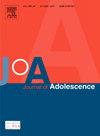Evolution and Drivers of Online Social Support Among Adolescents and College Students: A Cross-Temporal Meta-Analytic Study
Abstract
Introduction
This cross-temporal meta-analysis examined 16-year trends (2006–2022) in online social support among Chinese adolescents and college students, aiming to address an underexplored area in developmental and longitudinal research.
Methods
Analyses included 86 studies conducted in mainland China (N = 66,059; 41.68% male; Mage = 18.01 ± 2.4; data collected from 2006 to 2022). The Adolescent Online Social Support Questionnaire assessed informational, emotional, instrumental, and companionship support. Multilevel modeling evaluated associations with socioeconomic indicators (GDP, consumption, income), socio-educational indicators (education funding), and social network indicators (internet penetration, per capita weekly internet usage hours), with stratified analyses by gender, urban–rural residence, and only-child status.
Results
(1) Trends: Sustained increases in online social support were observed, with marked growth in informational and instrumental support, moderate increases in companionship, and stable emotional support. (2) Age disparities: College students showed faster increases in emotional and companionship support. (3) Gender patterns: Males showed consistent increases across all dimensions, while females experienced declines in emotional support. Gender differences favored males in instrumental and females in emotional support. (4) Demographics: Higher support levels were found among urban youth and only children. (5) Macro-level correlates: Societal indicators were positively associated with informational, instrumental, and companionship support, but negatively associated with emotional support.
Conclusions
The findings underscore age-specific developmental trajectories and highlight the role of socio-technological transformation in shaping online social support. Future research should integrate standardized longitudinal cohorts with digital behavioral traces.

 求助内容:
求助内容: 应助结果提醒方式:
应助结果提醒方式:


